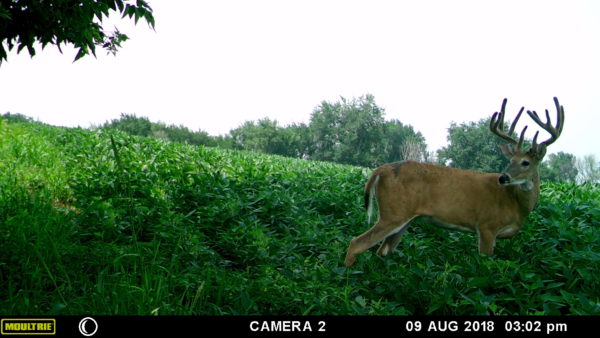
Deer hunters draw on a lot of wisdom passed down through generations. Often it becomes so widely accepted that it’s almost considered fact, like the idea that deer move more during cold fronts or that rutting bucks taste worse. Another one of those whitetail “facts” that everyone believes is that deer won’t eat yellow soybeans.
This is something I’ve often wondered whether it’s true. While I’ve had some really poor hunts over yellow soybeans, I’ve also had some of my best early season encounters during this time.
When soybeans are in the yellowing phase, the beans are ripening. It’s a transition from green to brown where the plant is going through major changes. While green, the plant has the maximum amount of moisture and the deer will feast on the soft leaves. When brown, the pods have reached full maturity and offer a nutritious seed.
The yellow phase will last about one to two weeks. During that time, the beans can go from 60% moisture to 15% moisture and cause the leaves to wilt and fall off. Usually edges and high spots will be the first to turn, giving fields a green-to-yellow gradient. This can mark an awkward time when the leaves won’t be as appetizing and the beans aren’t quite fully mature. However, I don’t think it’s so unappealing that deer ignore them all together.
Instead, this is a time that coincides with new food sources becoming available. During this phase, which usually takes place anywhere from early September to early October, you get natural competition from acorns, plums, berries, persimmons, honey locust, mushrooms, and more. There’s also some big ag that deer will favor, like alfalfa, corn, and apple orchards.
Not every fall is the same, though. In years when it’s really dry, there won’t be as much natural browse available. This can throw off timelines and cause the beans to turn while there’s no apples or acorns hitting the ground, forcing the deer to rely on yellowing beans. It’ll be even more amplified if the soybeans are irrigated while the area is going through a drought, keeping the beans in that green window longer.
“If deer populations are high, or if it’s a dry year when natural vegetation is scarce, they will eat any variety right down to the ground in some areas,” said Susan Wallace, former crop physiologist at Clemson University.
It’s not that deer hate yellow soybeans, it’s just that there’s usually more palatable options at the buffet. However, sometimes it’s the only thing at the buffet, giving hunters who like field edges the upper hand.





